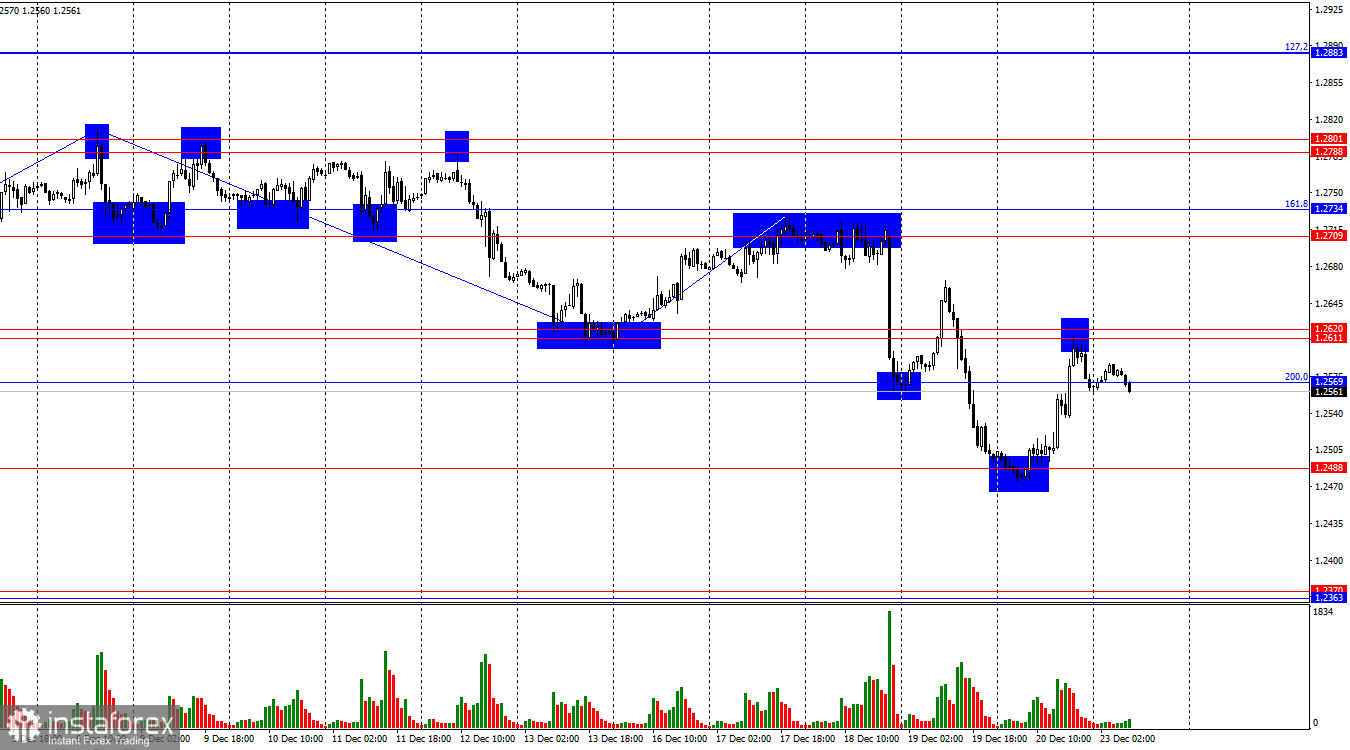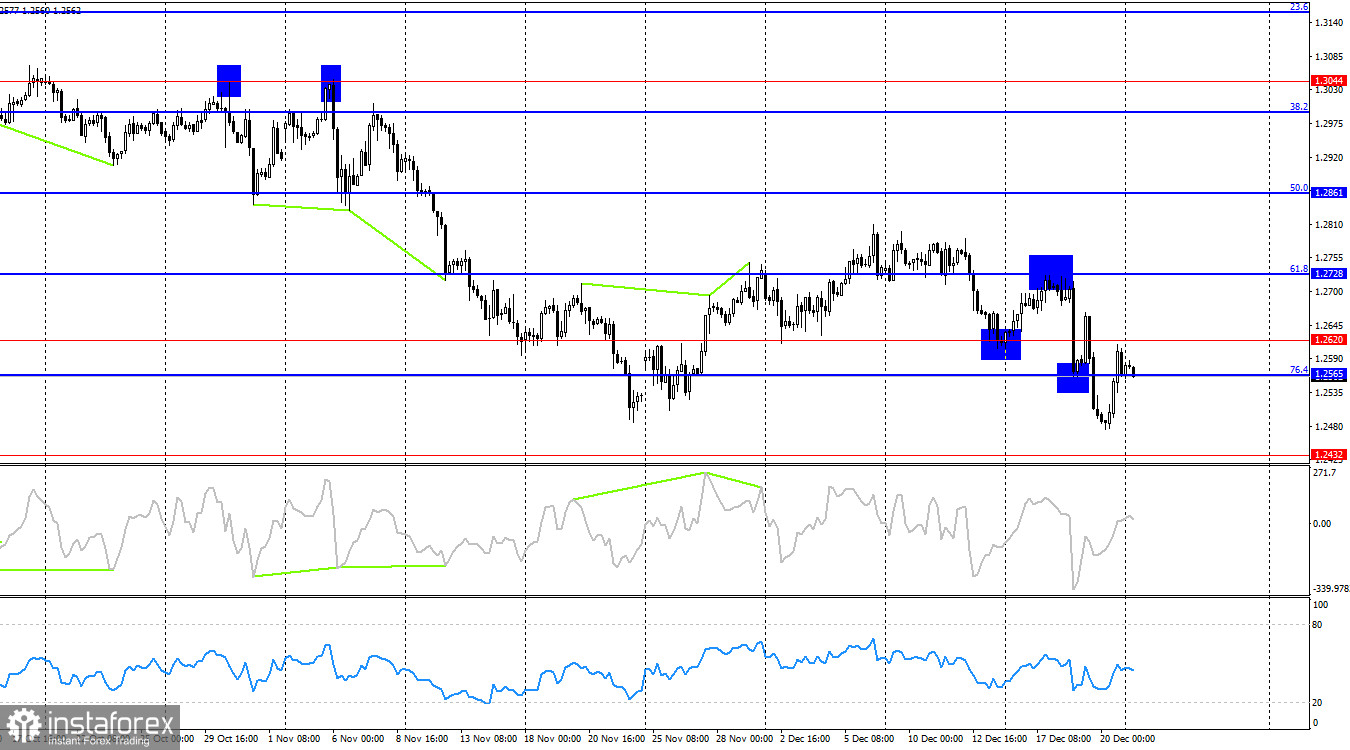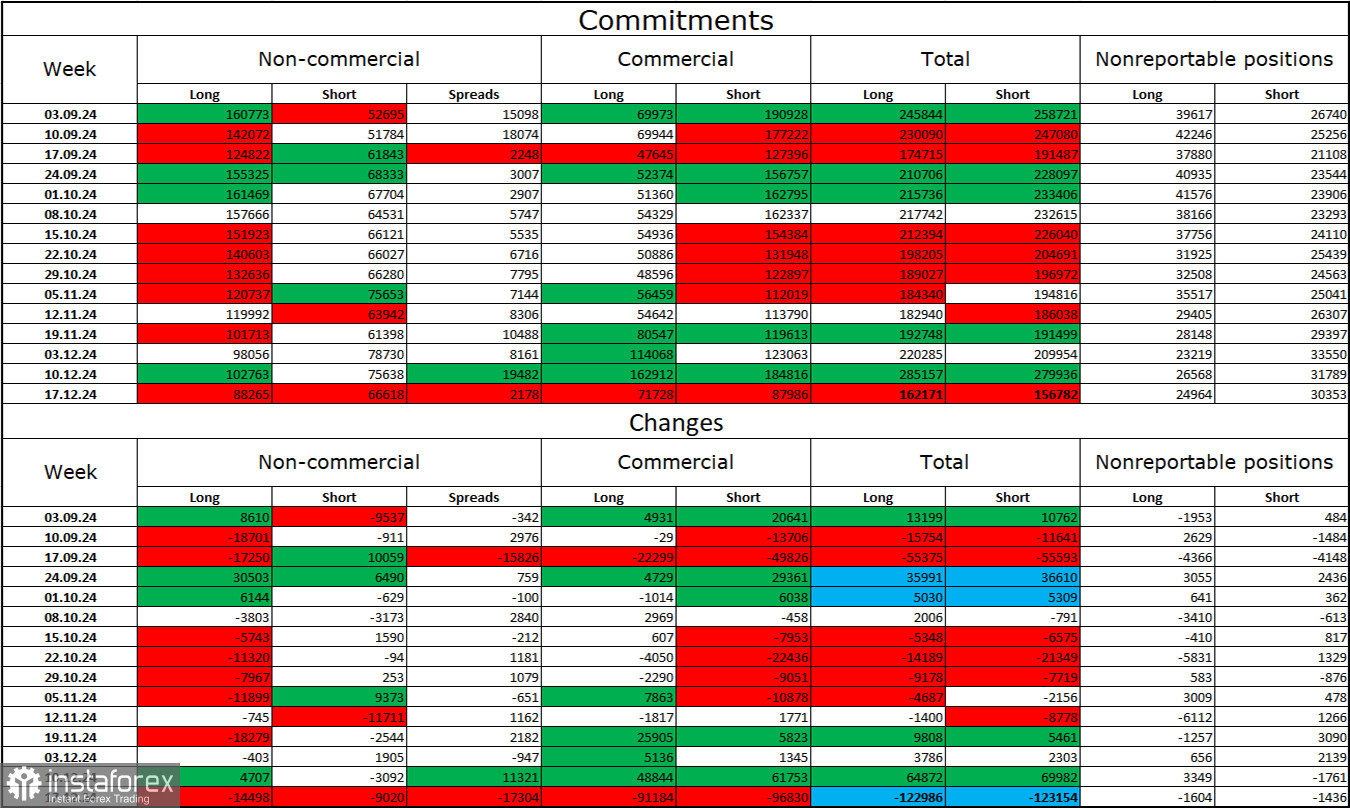
The wave situation is clear. The last completed upward wave failed to break the previous peak, while the last downward wave broke the previous low. Thus, the bullish trend can currently be considered complete, and the formation of a new bearish trend continues. To end this bearish trend, the pound needs to rise to at least the 1.2709–1.2734 zone.
On Friday, the pound unexpectedly recovered, even though the fundamental backdrop was not supportive. However, a decline has a strong chance of resuming on Monday. During the holiday week, any market movements are possible. There will be few news events, and it's uncertain how traders will act. Therefore, I suggest trading strictly according to the trend or graphical signals. This is both easier and harder simultaneously.
The week has just begun, but bears already have enough reasons to resume attacks. The UK's Q3 GDP report showed 0% quarter-on-quarter growth, with annual growth at just 0.9%, falling short of forecasts. Moreover, the Q2 figure was revised downward from 0.5% to 0.4% quarter-on-quarter. This shows that the UK economy is growing much weaker than expected—if it can even be considered growth. This is a good reason for bears to take a new offensive, especially given Friday's unexplained rise in the pound.
However, it's important to remember that trader activity may be very low, and COT reports indicate a massive reduction in market positions. This suggests that traders are exiting the market before Christmas and New Year rather than actively trading.

On the 4-hour chart, the pair reversed in favor of the pound and consolidated above the 76.4% retracement level at 1.2565. Thus, growth may continue toward 1.2620 and 1.2728. At the moment, I see no reasons for such growth in the pound. However, graphical signals and the overall trend should guide market entries.
Commitments of Traders (COT) Report

The sentiment of the "Non-commercial" category of traders changed little over the last reporting week. Long positions among speculators increased by 4,707, while short positions decreased by 3,092. Bulls still hold the advantage, but it has been declining in recent months. The gap between long and short positions is now only 27,000: 102,000 long versus 75,000 short.
In my view, the pound still has room to decline. COT reports indicate a strengthening of bearish positions almost every week. Over the last three months, the number of long positions decreased from 160,000 to 102,000, while short positions increased from 52,000 to 75,000. I believe professional players will continue to reduce long positions or increase shorts over time, as all potential reasons for buying the pound have already been priced in. Graphical analysis also supports a bearish outlook for the pound.
News Calendar for the U.K. and U.S.
- United Kingdom: Retail Sales Change (07:00 UTC).
On Monday, the economic calendar contains only one event, which has already disappointed traders. The influence of the news backdrop on trader sentiment for the rest of the day is likely to be weak.
Forecast and Advice for GBP/USD Traders
- Sales: Possible after a rebound from the 1.2709–1.2734 zone on the hourly chart, targeting 1.2611–1.2620. These targets have been achieved. New sales were possible after a rebound from the 1.2611–1.2620 zone on the hourly chart, targeting 1.2488 and 1.2363–1.2370.
- Purchases: Considered after a rebound from the 1.2488 level on the hourly chart, with targets successfully reached.
Fibonacci retracement levels are based on 1.3000–1.3432 for the hourly chart and 1.2299–1.3432 for the 4-hour chart.





















